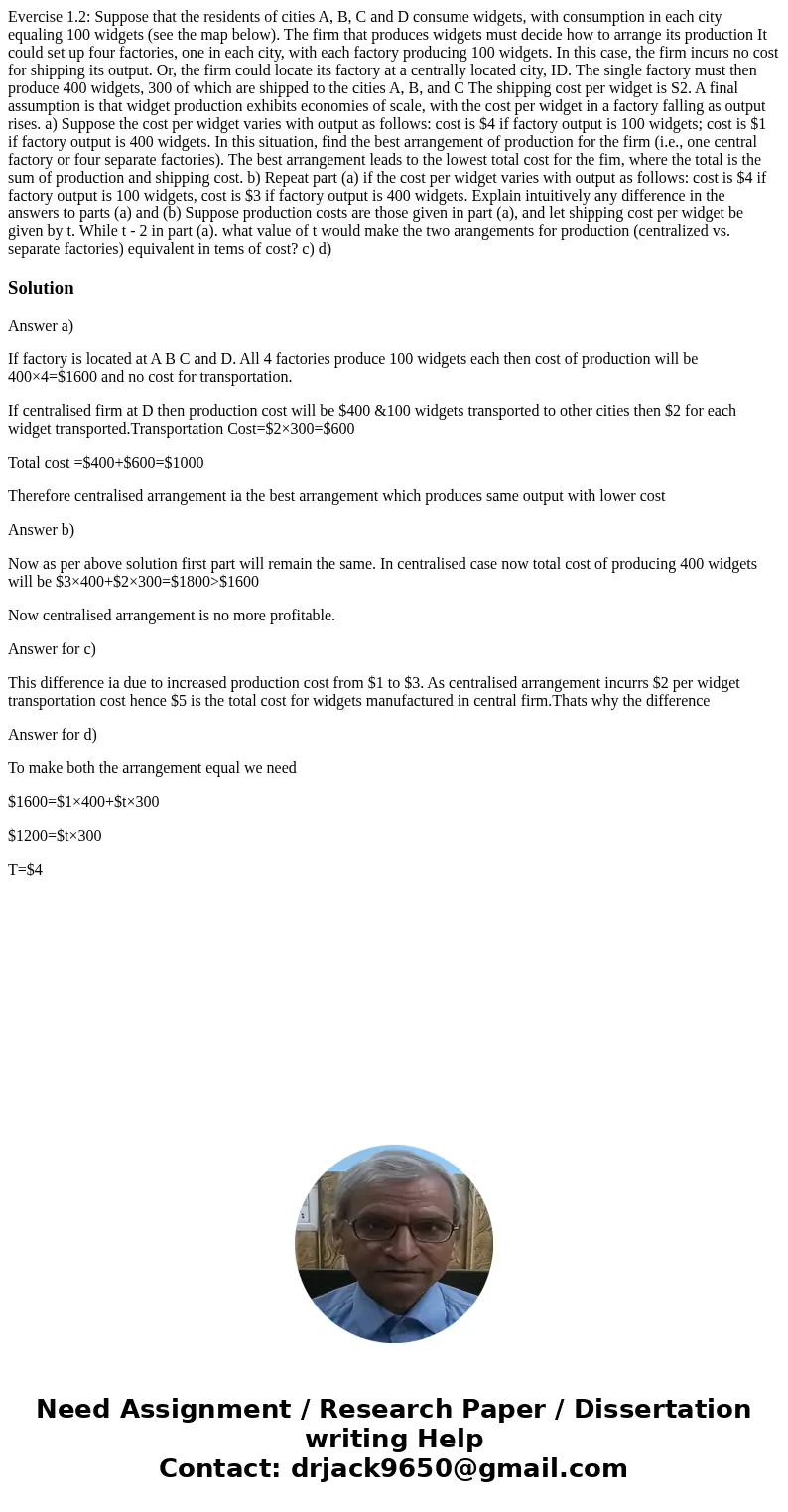Evercise 1.2: Suppose that the residents of cities A, B, C and D consume widgets, with consumption in each city equaling 100 widgets (see the map below). The firm that produces widgets must decide how to arrange its production It could set up four factories, one in each city, with each factory producing 100 widgets. In this case, the firm incurs no cost for shipping its output. Or, the firm could locate its factory at a centrally located city, ID. The single factory must then produce 400 widgets, 300 of which are shipped to the cities A, B, and C The shipping cost per widget is S2. A final assumption is that widget production exhibits economies of scale, with the cost per widget in a factory falling as output rises. a) Suppose the cost per widget varies with output as follows: cost is $4 if factory output is 100 widgets; cost is $1 if factory output is 400 widgets. In this situation, find the best arrangement of production for the firm (i.e., one central factory or four separate factories). The best arrangement leads to the lowest total cost for the fim, where the total is the sum of production and shipping cost. b) Repeat part (a) if the cost per widget varies with output as follows: cost is $4 if factory output is 100 widgets, cost is $3 if factory output is 400 widgets. Explain intuitively any difference in the answers to parts (a) and (b) Suppose production costs are those given in part (a), and let shipping cost per widget be given by t. While t - 2 in part (a). what value of t would make the two arangements for production (centralized vs. separate factories) equivalent in tems of cost? c) d)
Answer a)
If factory is located at A B C and D. All 4 factories produce 100 widgets each then cost of production will be 400×4=$1600 and no cost for transportation.
If centralised firm at D then production cost will be $400 &100 widgets transported to other cities then $2 for each widget transported.Transportation Cost=$2×300=$600
Total cost =$400+$600=$1000
Therefore centralised arrangement ia the best arrangement which produces same output with lower cost
Answer b)
Now as per above solution first part will remain the same. In centralised case now total cost of producing 400 widgets will be $3×400+$2×300=$1800>$1600
Now centralised arrangement is no more profitable.
Answer for c)
This difference ia due to increased production cost from $1 to $3. As centralised arrangement incurrs $2 per widget transportation cost hence $5 is the total cost for widgets manufactured in central firm.Thats why the difference
Answer for d)
To make both the arrangement equal we need
$1600=$1×400+$t×300
$1200=$t×300
T=$4

 Homework Sourse
Homework Sourse